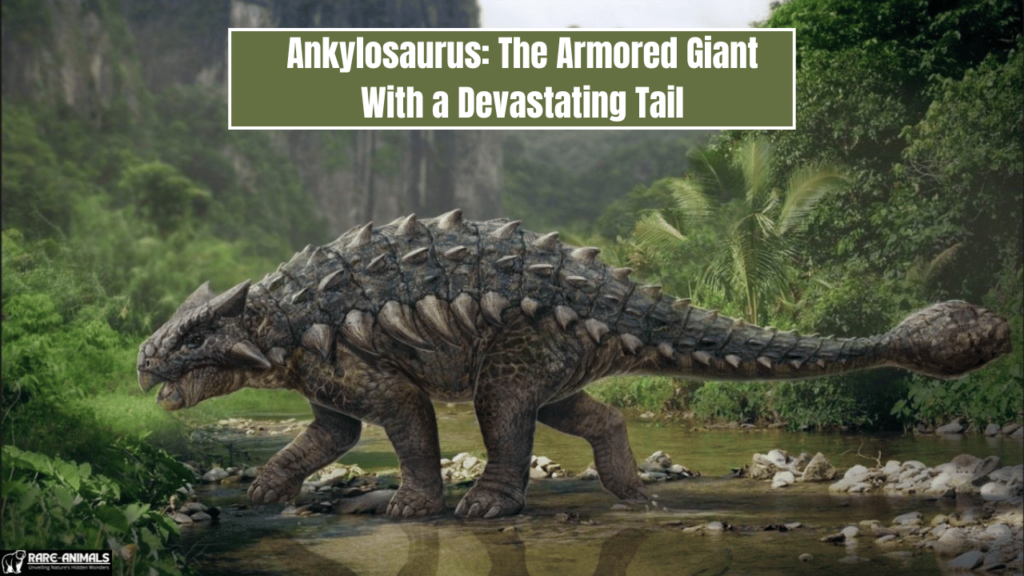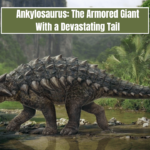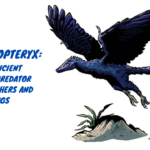Imagine a prehistoric world where massive dinosaurs ruled the land, each uniquely adapted for survival. Among these giants, the Ankylosaurus stood out as one of the most well-armored and heavily fortified herbivores of the Late Cretaceous period.
With its thick, bony armor and a powerful club-like tail, this dinosaur was a walking fortress, capable of defending itself against even the fiercest predators like Tyrannosaurus rex.
In this article, we’ll explore the fascinating anatomy, behavior, habitat, and defensive strategies of Ankylosaurus. Whether you’re a paleontology enthusiast, a student, or simply curious about dinosaurs, this comprehensive guide will give you an in-depth look at one of the most impressive armored dinosaurs to ever roam the Earth.
What Is Ankylosaurus?
An Overview of the Armored Giant
Ankylosaurus is a genus of armored dinosaurs that lived around 68–66 million years ago during the Late Cretaceous period.
Its name, which means “fused lizard” in Greek, refers to its heavily reinforced body, featuring thick osteoderms (bony plates embedded in the skin) that protected it from predators.
Key Facts About Ankylosaurus:
- Scientific Name: Ankylosaurus magniventris
- Time Period: Late Cretaceous (68–66 million years ago)
- Size: Up to 8 meters (26 feet) long
- Weight: Estimated 4,800–8,000 kg (10,000–18,000 lbs)
- Diet: Herbivore (fed on low-lying plants)
- Distinctive Features:
- Thick, bony armor covering its back and sides
- A powerful clubbed tail used for defense
- A wide, low body with short, sturdy legs
- Small, leaf-shaped teeth adapted for chewing tough vegetation
This dinosaur is often compared to a prehistoric tank, built to withstand attacks while using its formidable tail as a weapon.
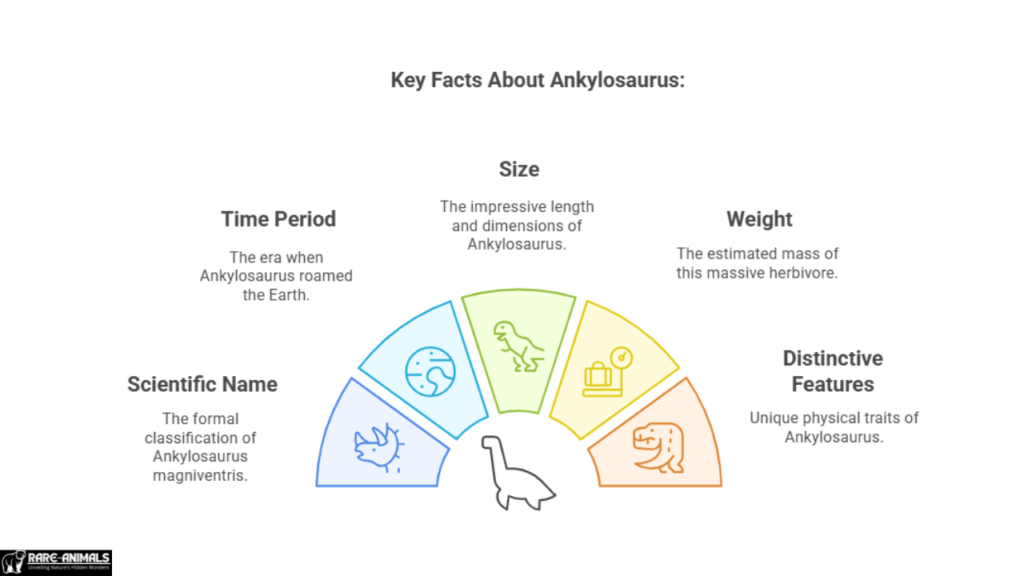
Anatomy and Physical Characteristics
The Bony Armor: A Natural Shield
One of the most distinctive features of Ankylosaurus is its armor plating, known as osteoderms or scutes. These thick, bony structures were embedded in the skin and formed a nearly impenetrable defense against predators.
- The armor covered its back, neck, and even eyelids, leaving very few weak points.
- The osteoderms varied in shape and size, some being small nodules while others formed large plates.
- Ankylosaurus likely had horn-like spikes along its body, further deterring attacks.
The Tail Club: A Devastating Weapon
Arguably, the most famous feature of Ankylosaurus is its clubbed tail, a powerful defense mechanism that could crush bones with a single swing.
- The tail was reinforced with thickened vertebrae and strong tendons, allowing it to deliver high-impact blows.
- Studies suggest that the tail club could generate enough force to break the legs of attacking predators, including T. rex.
- The muscular structure of the tail indicates that it was not just a passive feature but an actively wielded weapon.
Skull and Jaw Adaptations
Despite its formidable armor, Ankylosaurus was a peaceful herbivore. Its skull and jaw had specialized adaptations for feeding:
- Broad, beak-like snout: Ideal for cropping tough, fibrous plants.
- Leaf-shaped teeth: Designed for slicing through vegetation, though not as sharp as carnivorous dinosaurs.
- Large nasal passages: Possibly used for enhanced smell or even heat regulation.
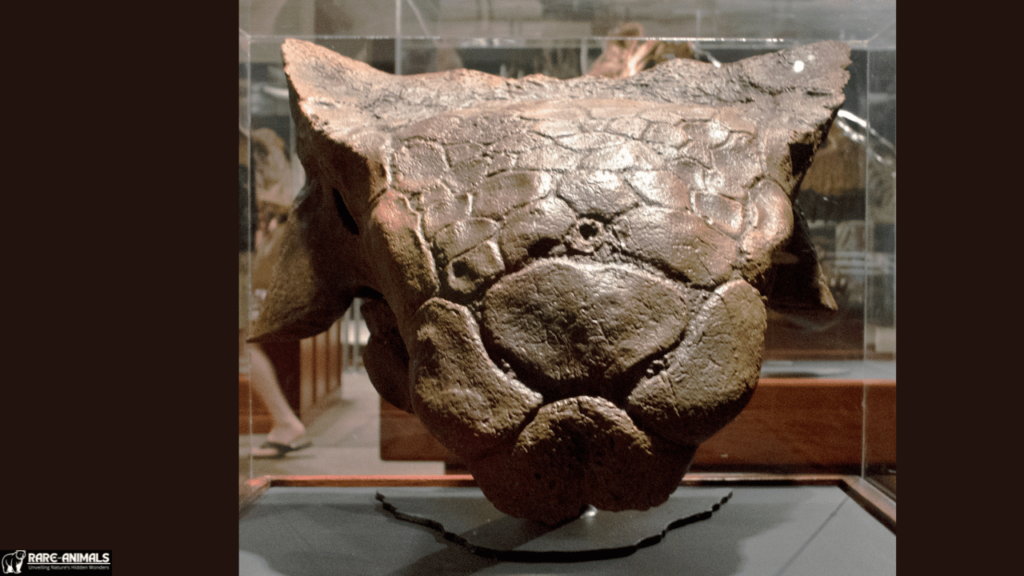
Habitat and Lifestyle: Where Did Ankylosaurus Live?
Environment and Distribution
Ankylosaurus lived in what is now North America, primarily in areas that are part of modern-day Montana, Wyoming, and Alberta, Canada.
The fossilized remains of this dinosaur have been found in the Hell Creek Formation, a region known for its rich deposits of Late Cretaceous dinosaurs.
- Climate: The region had a warm, humid climate with seasonal rainfall.
- Ecosystem: It shared its habitat with other famous dinosaurs like Tyrannosaurus rex, Triceratops, and Edmontosaurus.
- Vegetation: Consisted mainly of ferns, cycads, conifers, and angiosperms (flowering plants), which provided food for Ankylosaurus and other herbivores.
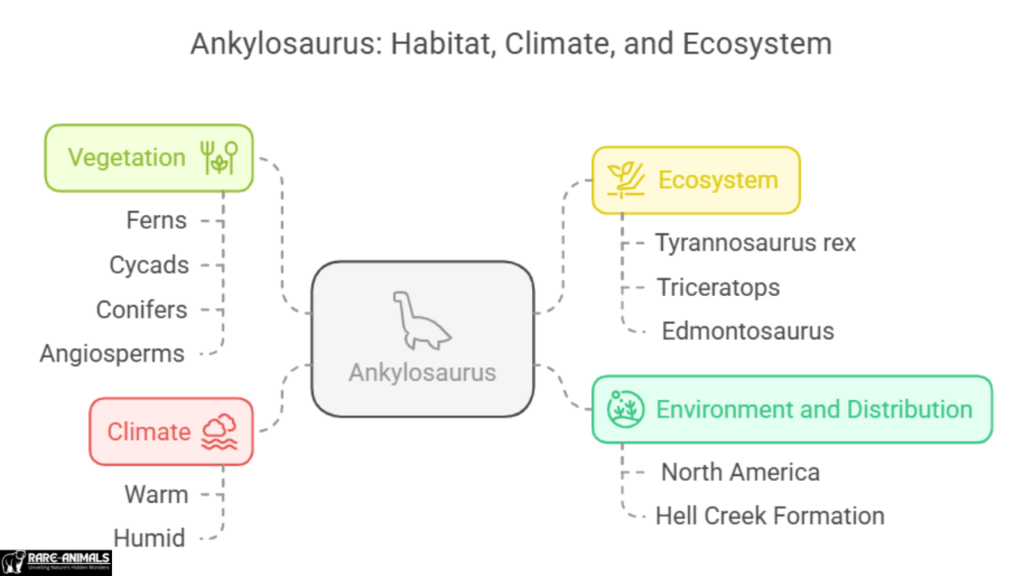
Behavior and Social Structure
While there is limited direct evidence about Ankylosaurus’ behavior, paleontologists believe it was a solitary or loosely social dinosaur.
- Movement: Despite its heavy armor, it was likely slow-moving, using its short, sturdy legs to support its weight.
- Defense Tactics: If threatened, it likely used its tail club to defend itself rather than relying on speed to escape.
- Foraging: Being a low-browsing herbivore, it fed on plants close to the ground, stripping vegetation with its beak-like snout.
How Did Ankylosaurus Defend Itself?
A Living Tank: Defense Against Predators
Ankylosaurus shared its environment with some of the most powerful predators of the Cretaceous, including Tyrannosaurus rex. However, it had several unique defense mechanisms:
- Thick armor plating – Protected its body from bites and slashes.
- Low profile and wide stance – Made it difficult for predators to flip it over.
- Tail club weapon – Capable of delivering bone-crushing blows to attackers.
- Spiky armor protrusions – Added another layer of defense.
Because of these adaptations, Ankylosaurus was one of the most well-protected herbivores of its time.
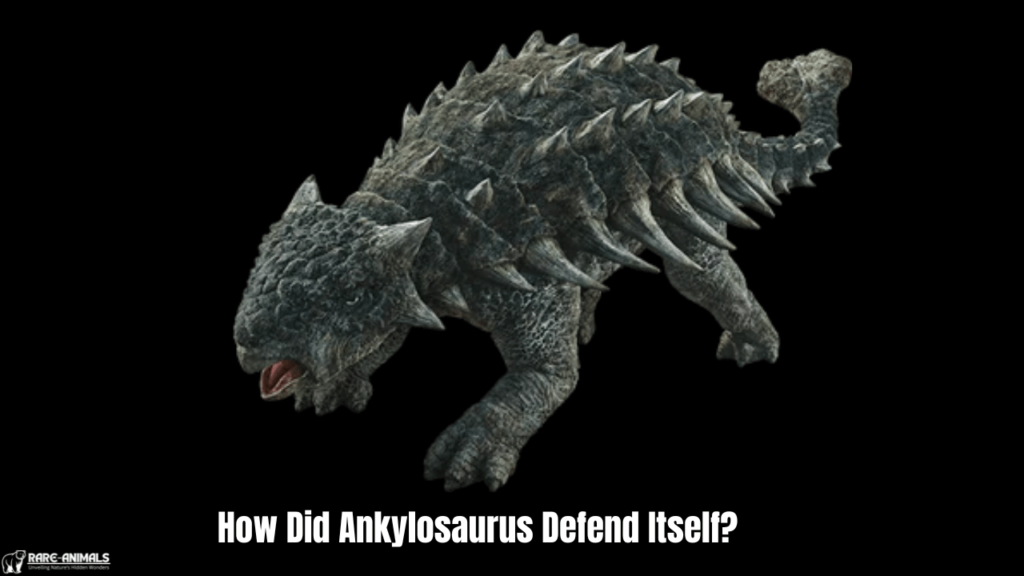
Fossil Discoveries and Scientific Significance
Key Fossil Finds
The first Ankylosaurus fossils were discovered in 1906 by Barnum Brown, a famous paleontologist, in the Hell Creek Formation.
Since then, multiple incomplete skeletons, skull fragments, and osteoderms have been found, helping scientists reconstruct its appearance and behavior.
What Can We Learn From Ankylosaurus?
- Evolution of armored dinosaurs – Shows how ankylosaurs adapted for defense over millions of years.
- Dinosaur biomechanics – Helps scientists understand how the tail club functioned.
- Paleoecology – Provides insights into the Late Cretaceous environment and ecosystem.
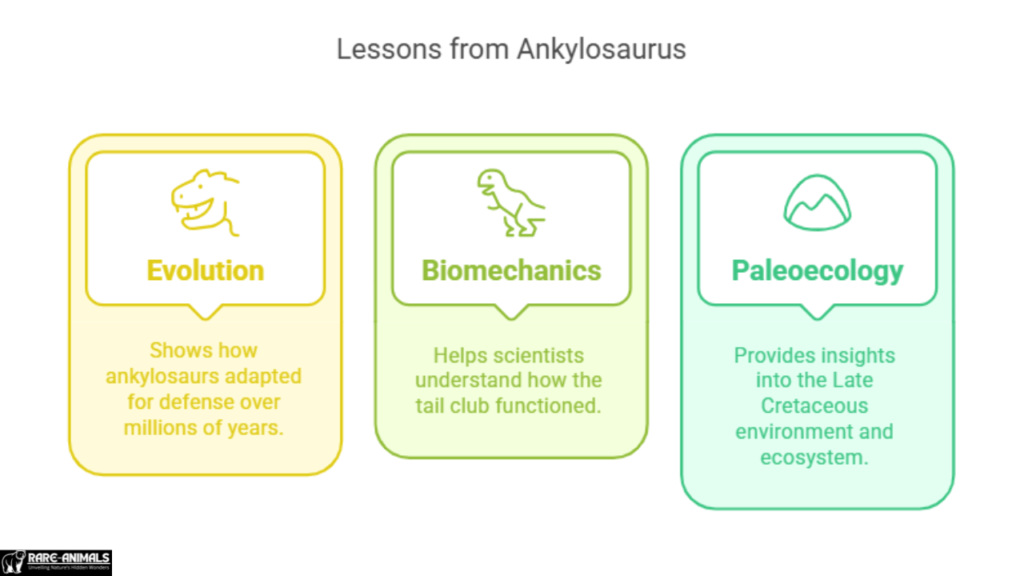
Conclusion
Ankylosaurus was truly a marvel of prehistoric engineering—a heavily armored, tail-wielding herbivore that could hold its own against even the deadliest predators.
Its fascinating anatomy, defensive strategies, and survival adaptations make it one of the most interesting dinosaurs to study.
If you’re intrigued by the world of dinosaurs, consider exploring more about ankylosaurs, fossil discoveries, and paleontology research to uncover even deeper insights into Earth’s prehistoric past.
FAQs
1. How strong was an Ankylosaurus tail club?
Studies suggest it could generate forces strong enough to break the bones of large predators like T. rex, possibly delivering over 6,000 Newtons of force.
2. What did Ankylosaurus eat?
It was an herbivore, feeding primarily on ferns, cycads, and low-growing plants using its beak-like snout and leaf-shaped teeth.
3. How big was Ankylosaurus compared to other dinosaurs?
At 26 feet long and up to 18,000 lbs, it was one of the largest ankylosaurs, but not as big as sauropods or theropods like T. rex.
4. Did Ankylosaurus live in herds?
There’s no strong evidence for herding behavior. It likely lived a mostly solitary life, but might have formed loose groups occasionally.
5. Where can I see Ankylosaurus fossils?
Fossils can be found in museums like the American Museum of Natural History and the Royal Tyrrell Museum in Canada.

Alveena is an experienced content writer with a knack for crafting engaging and insightful pieces. She thrives on breaking down complex ideas and presenting them as clear, captivating content that resonates with readers.

